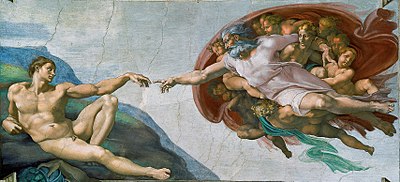Our website is made possible by displaying online advertisements to our visitors.
Please consider supporting us by disabling your ad blocker.
Masterpiece

A masterpiece, magnum opus, or chef-d'œuvre (French for 'master of work'; pl. chefs-d'œuvre; French: [ʃɛ.d‿œvʁ]) is a creation that has been given much critical praise, especially one that is considered the greatest work of a person's career or a work of outstanding creativity, skill, profundity, or workmanship.
Historically, a "masterpiece" was a work of a very high standard produced to obtain membership of a guild or academy in various areas of the visual arts and crafts.

- ^ "The Theft That Made Mona Lisa a Masterpiece". NPR. July 30, 2011. Retrieved February 15, 2019.
- ^ "Why Mona Lisa Became An Icon". 21 September 2001.
- ^ Lichfield, John (April 2, 2005). "The Moving of the Mona Lisa". The Independent. Archived from the original on 2022-05-12.
the best known, the most visited, the most written about, the most sung about, the most parodied work of art in the world
Previous Page Next Page


